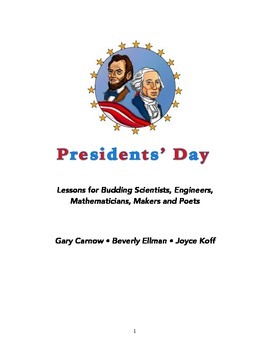Presidents' Day for Budding Poets and STEM Learners
- PDF
Description
This unit is part of Joyce Koff’s, Beverly Ellman’s and Gary Carnow’s poetry enhanced STEM Through the Months learning series for budding scientists, engineers, mathematicians, makers and poets. Included in the poetry lesson is a reproducible biography of Carl Sandburg and an excerpt from his poem "From the People, Yes". Students will use the poem as a model to write their own poems about issues to which they believe the president of their choice would agree or not agree. The STEAM portion for Presidents’ Day includes technology, art, and science projects and handouts. The technology lesson focuses on using the Internet for research in order to create a fancy mosaic of little-known facts about presidents with a word processor. Student scientists learn about graphology (handwriting analysis) as they become graphologists and study the various trait indicators that they will use to analyze the handwriting of U.S. Presidents and gain insight into their personalities. Teachers can extend the lesson by using the resource list and supplementary poems as they celebrate Presidents’ Day with their class.





